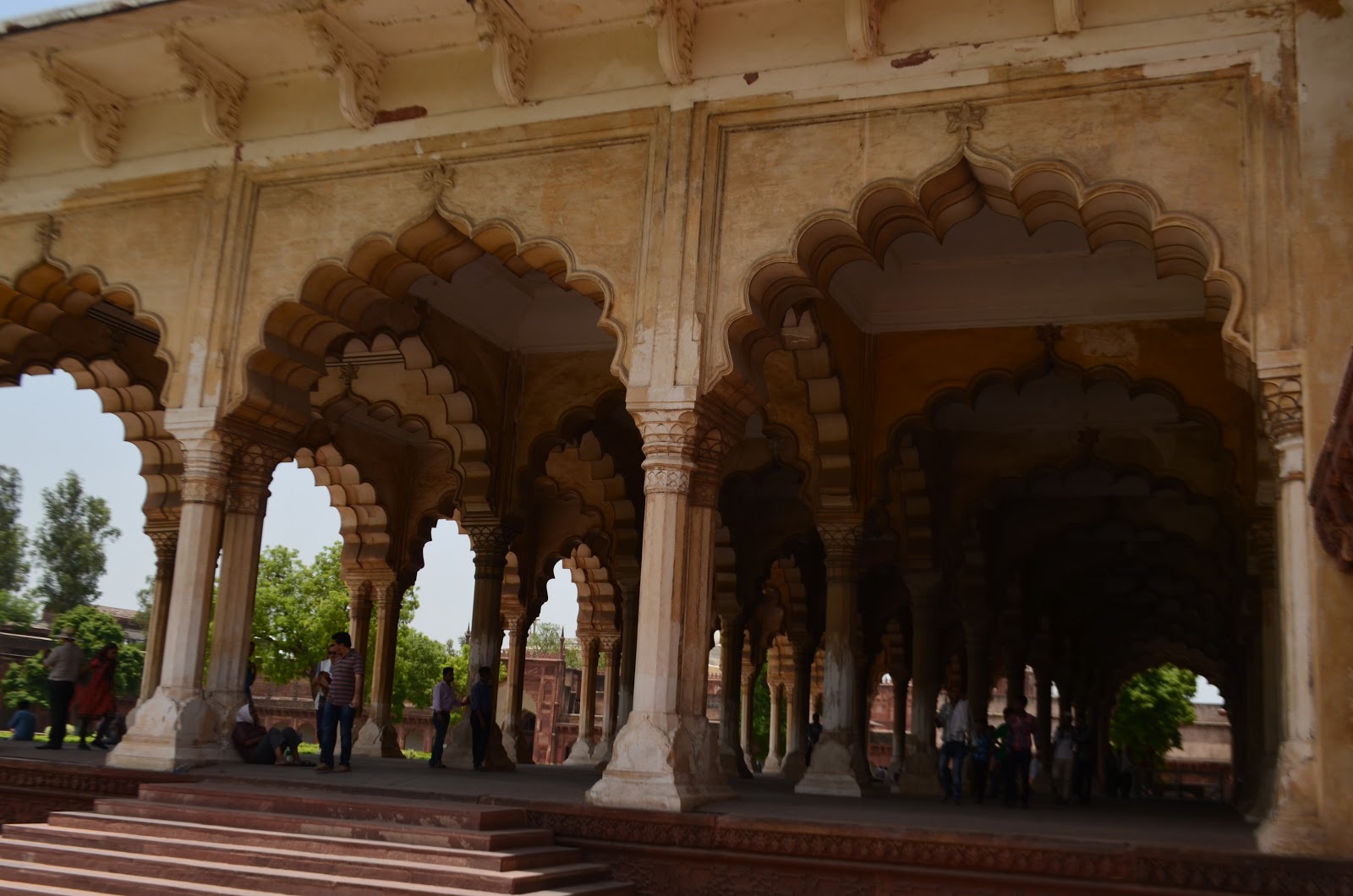This posting will have photos of the imposing fort of Agra which was the home of the Mogul kings. It is a vast complex and a UNESCO World Heritage site, as is the Taj Mahal. And here I am, looking not quite wilted, in the scorching heat of 114 degrees.
 |
| Except for the palace of the Mogul kings, the fort was constructed of sandstone; the palace of marble. |
 |
| From this balcony within the main gate, the Mogul king would get on his elephant to leave the castle. |
 |
| The first interior courtyard of the fort. |
 |
| The entry gate to the palace grounds. |
 |
| The bedroom of the Mogul king where he would be entertained by his harem. Now replaced by metal, the roof top ornaments were originally of gold! |
 |
| A view of one of the empty moats. |
 |
| A view of the Taj Mahal, in the distance, from the terrace of the king's bedroom. |
 |
| A recently restored section of the ceiling to show what it would have looked like. |
 |
| A "Mogul arch," the only design feature of the fort which is purely Mogul in design. |
 |
| The wall niches would have been filled with oil burning lamps. |
 |
| Portico of the palace where the Mogul king would meet with his ministers and foreign dignitaries. |
 |
| Only the king and his prime minister were allowed to sit, everyone else stood within the portico. |
 |
| Balcony above the portico where the Mogul king would be seated. The prime minister sat on a low platform on the floor underneath this balcony. |
 |
| The only window on the palace wall looking into the portico. It was immediately next to the balcony. This is where the king's wife was allowed to look at the proceedings of the king's court. |
 |
| Grave site of a British Viceroy who was allowed to be buried in the 19th century in the courtyard of the portico. |
 |
| The animals on the river bed are water buffalo. [Photo was taken as we were driving over the bridge.] |
 |
| A parting photo from Agra of a street vendor. |






















No comments:
Post a Comment